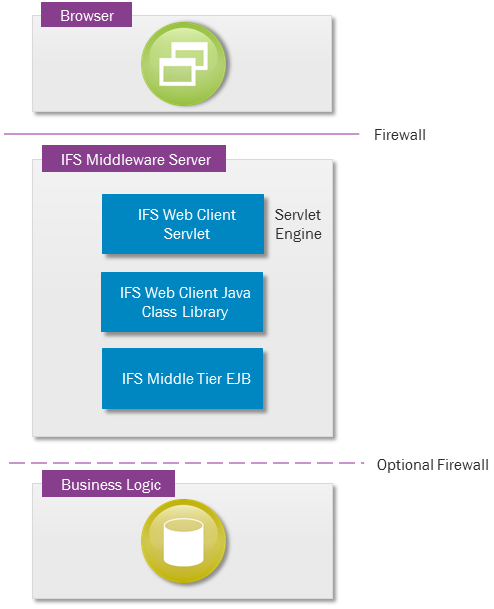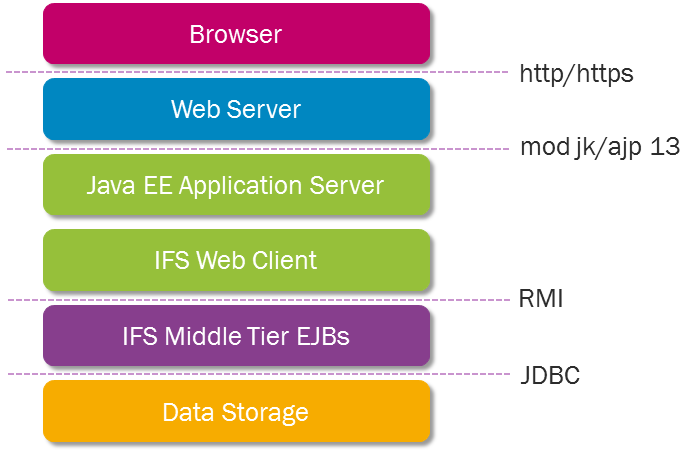| Foundation1 / Overview / Webclient / Web Client Architecture / |
IFS Web Client component is a framework for creating a web based user interface for IFS Applications. IFS Web Client is written entirely in the Java programming language and deployed in Java EE application server IFS Middleware Server. The framework is built upon the Java Servlet architecture.

To make it possible to execute servlets at a web server, a servlet engine is necessary. There are typically two containers within a Java EE application server: the EJB container and the JSP/Servlet container. Web related things, such as Servlets and Java Server Pages, are deployed into the JSP/Servlet container. For optimal performance an additional HTTP web server is typically placed in front of the JSP/Servlet container, which serves the static contents, such as static HTML pages, images, etc. The web server together with the JSP/Servlet container will handle all the HTTP requests. An example of such a servlet engine is Tomcat developed within the Jakarta project. An example of a web server is Apache or Microsoft IIS.
All static documents, like normal HTML pages, images, etc. are on the other hand processed by the web server itself, which is optimized for such type of requests.
Although the interface is built using the Java language and the IFS Web Client API, certain functionality within IFS Applications requires other frameworks as well.
An IFS Web Client based application needs to collaborate with business logic written in PL/SQL language and installed in an Oracle database. For this purpose IFS Web Client uses the IFS Middle Tier framework. The IFS Middle Tier framework is also built upon the Java EE architecture.
IFS Web Client communicates with the business logic through the middle tier EJBs (Enterprise Java Beans). The EJBs that are required by IFS Web Client are bundled within the web enterprise archive file (.ear file). This allows for better performance and security because the local method interface of the EJBs are used.

Summarizing all layers of a IFS Web Client based application, inclusive involved communication protocols/methods, can be showed as follows:
